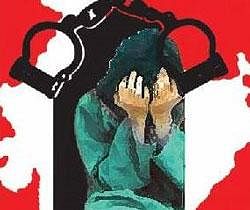
Amid empty talk of ‘empowerment of women’—rapes have become a routine affair with girl-children or teenagers being regularly targeted in every city, town or rural area. It is as if wolves have been set on the second-sex – feticide to outright killing.
A steep decline in the quality of governance, proportionate rise in public inertia and self-centered attitude or simple indifference of the public has made matters worse for women, particularly from the Dalit segment which remains most vulnerable against muscle, money and political powers of the intermediate caste with dominant feudal tendencies.
If on the one hand it is uninterrupted ‘honour killing’ against girls seeking to assert their independence in their personal lives, on the other it is the wanton outrage of modesty with no counter-action from the state or the society at large. Instances of poor and lower-caste women resisting rape and then disfigured with thier nose, hands or other body parts chopped are not few and far between -- some are reported but a large majority go unnoticed. In some states, ministers are themselves accused of rape.
At the ground level, women occupying high posts as head of state, prime minister, speaker, leader of opposition, chief of political party or holding other constitutional posts in the country is not making any material difference in the abysmal condition of the same gender.
Not a day passes when unspeakable crimes like rape, gang-rape or simple butchering of the victims are not reported from bustling cities and villages. There seems to be no safety for women of any age group unless they are protected by bodyguards. And these are a few privileged women in high-end jobs or business, politics or Bollywood.
The tilt against women have roots going back to centuries.
The insecurity (monitory or otherwise) relating to girl-child vis-à-vis a male one is further reinforced by moth-eaten traditions and beliefs. Education has not made any desirable change in the attitudes. The transparently hypocrite ‘educated middle class’ goes to Singapore and Thailand for sex determination tests. Some top film stars have also reportedly flown to these countries ‘to work out’ a male progeny.
False prestige
The so called ‘liberated class’ gives dowry to their daughters as a matter of false prestige when it has options available to make them stand on their feet so that they could make independent choices. There are lakhs of instances where rich parents of daughters have paid crores of rupees succumbing to the ‘black mail’ of in-laws or that of the husband but did not have the courage to bring their daughters back home (the fear of societal stigma!).
The end result in a majority of such cases is no secret – daughters are done to death by in-laws lusting for more money. This is the case with the city-based ‘modern, English speaking Indians’ who would otherwise be swearing by the western life style, thought and ‘individual independence.’
The cumulative outcome is that India has one of the largest incidents of female foeticide. The country has the dubious distinction of having one of the biggest girl-child prostitution in the world. In the list of annual missing (abducted) children (estimated to be around 70,000 each year) girl children are the majority.
The systemic brutality against the girl-child has, over a period, led to an imbalance in the sex ratio, with Haryana – the citadel of public lynching of women -- having the highest skewed ratio (877 women against 1,000 men). It is no better in Punjab, Delhi, Maharashtra and other states the northern India.
Haryana’s infamous ‘khap panchayats’ which order ‘honour killings’ of young couples marrying against the wishes of their elders, has the blessings of the political class, playing regressive politics of vote bank even after 63 years of independence and in spite of the Supreme Court’s scathing remarks on ‘khaps.’ One of the young Congress MPs, Naveen Jindal, has openly defended the ‘khaps’.
The irony is that there is not even a semblance of a pro-active step from governments, human rights organisations, women’s organisations or women politicians to bring a visible major policy shift in respect of administration of justice, law and order and change in the functioning of police which has a mindset tilted against working or ‘liberated women.’
Women’s organisations or government bodies step into the scene only if a rich or a celebrity is involved or if media continues to focus on the issue that is ‘encashable’. The concerns of these ‘professional bodies’ fade-out swiftly once the electronic media in particular switches off its camera on the victim.
Women, otherwise, portrayed in hyperbole terms in religious texts, literature and traditions of the country remain prisoners of time, traditions, political games and the rising consumerist web. There is no ‘safe exit’ for her even though she may be a city-based working women or an uneducated village women drawing water from a pond.